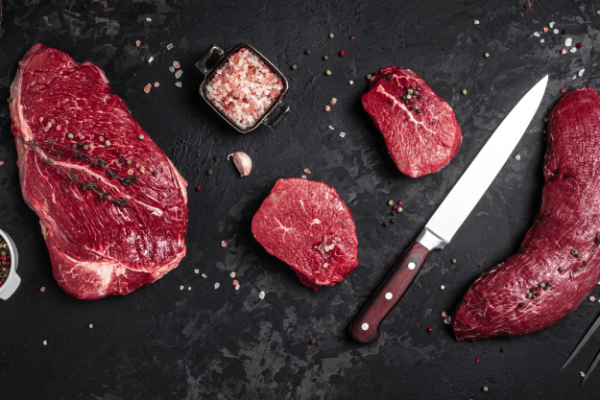Food Safety Tips for Meat Processing
When it comes to meat, safety is everything. Whether you’re purchasing from a local meat packing plant like ours or processing your own meat at home, knowing how to handle, store, and prepare meat properly is crucial for protecting your health and getting the best flavor from your food.
As a USDA-certified meat processing provider, we follow strict safety protocols to ensure the highest quality in every cut. And this month, we’re going over some essential food safety tips to keep in mind when handling meat.
1. Keep It Clean
Cleanliness is one of the most important aspects of meat processing. Before and after handling raw meat, always wash your hands with soap and warm water for at least 20 seconds. Clean and sanitize all surfaces, knives, and equipment that come into contact with raw meat. Bacteria can spread easily from meat to countertops, cutting boards, or other foods if surfaces aren’t properly cleaned.
In our meat packing plant, we follow rigorous sanitation schedules and use commercial-grade cleaning agents to prevent cross-contamination and maintain a clean environment.
2. Maintain Proper Temperatures
Temperature control is key to food safety. Raw meat should always be kept at or below 40°F (4°C) to slow bacterial growth. If you’re transporting meat, use an insulated cooler with ice packs. Once processed, meat should be frozen or refrigerated promptly.
When cooking, use a meat thermometer to ensure safe internal temperatures. For example, ground beef should reach at least 160°F, while whole cuts of beef should hit 145°F with a three-minute rest time. Undercooked meat is a common source of foodborne illness, so don’t rely on guesswork—use a thermometer to be sure.
3. Separate Raw and Cooked Foods
Cross-contamination happens when raw meat comes into contact with cooked food or ready-to-eat items. Always use separate cutting boards and utensils for raw meat and other foods, especially produce. In a meat processing environment like ours, we implement strict separation protocols to ensure that raw meat never crosses paths with finished products.
4. Know Your Source
Finally, one of the best ways to ensure food safety is to choose a reputable meat processing provider. At Pease Packing, our USDA-inspected facility adheres to the highest standards of cleanliness, temperature control, and product handling. From slaughter to packaging, we’re committed to delivering safe, high-quality meat you can trust.
Trust Pease Packing for Safe, Local Meat
Whether you’re filling your freezer or shopping for tonight’s dinner, food safety starts with a responsible meat packing plant. And at Pease Packing, we take that responsibility seriously. Contact us today to get high quality, delicious cuts of meat that you’re sure to love.



